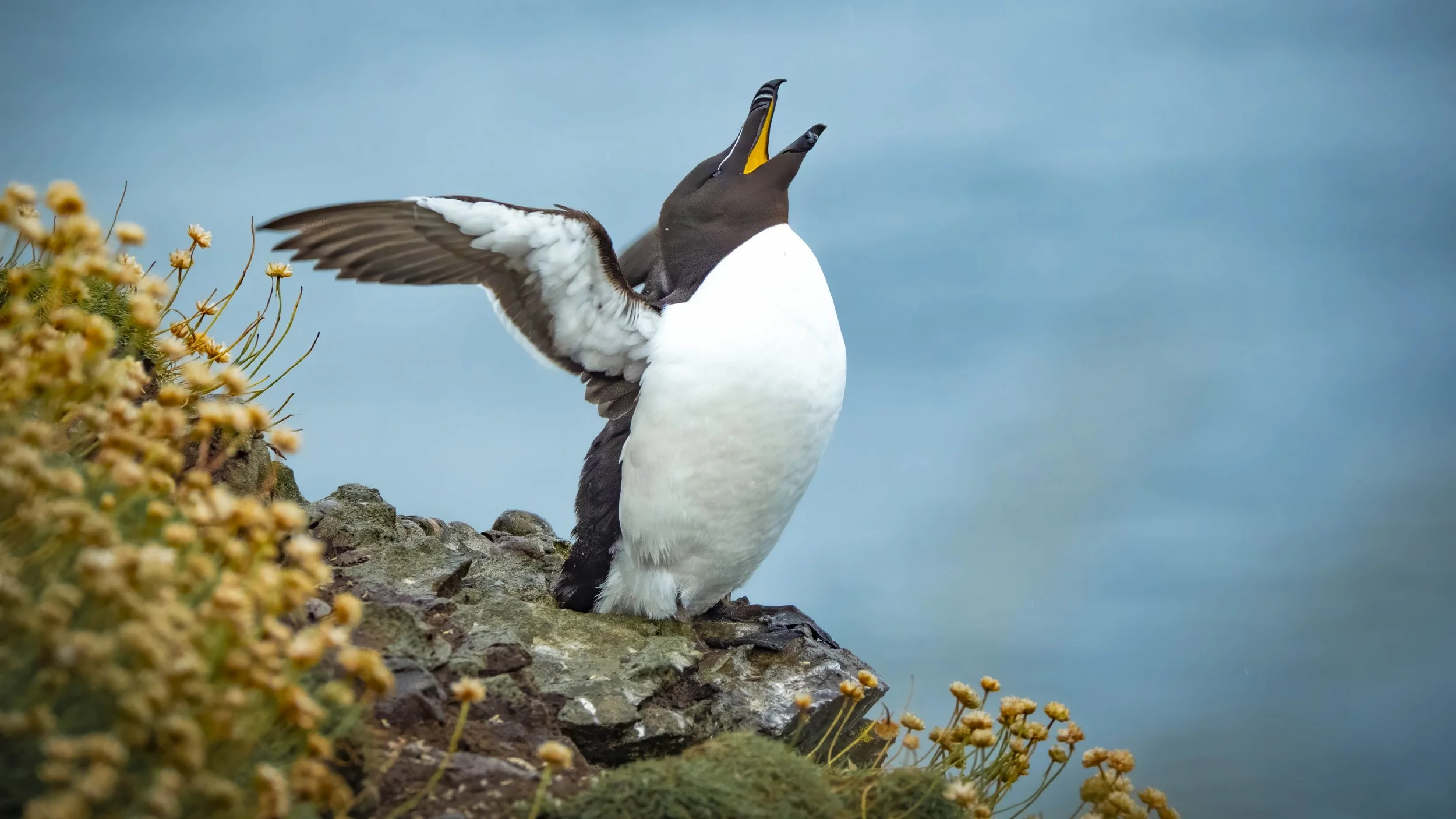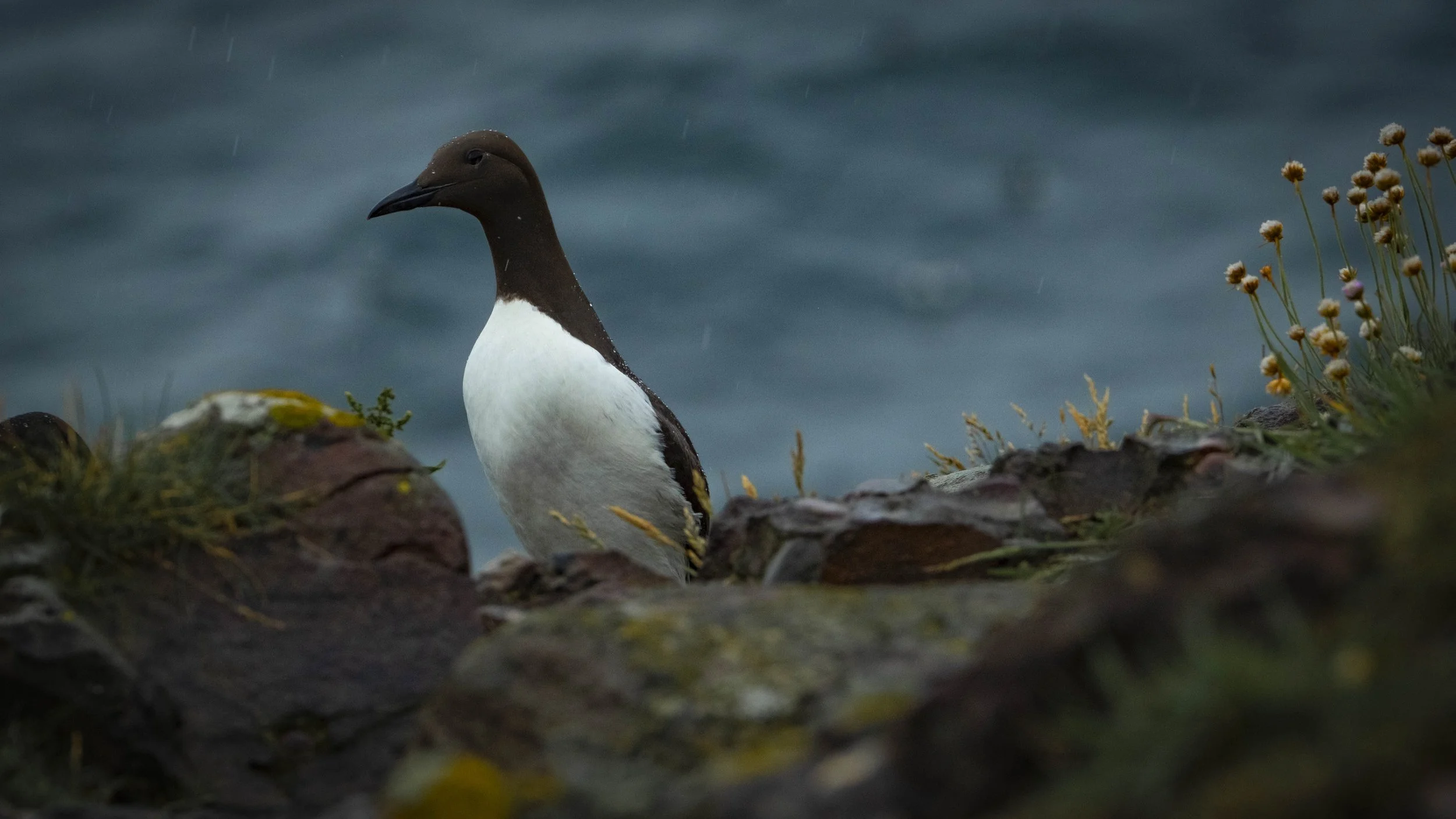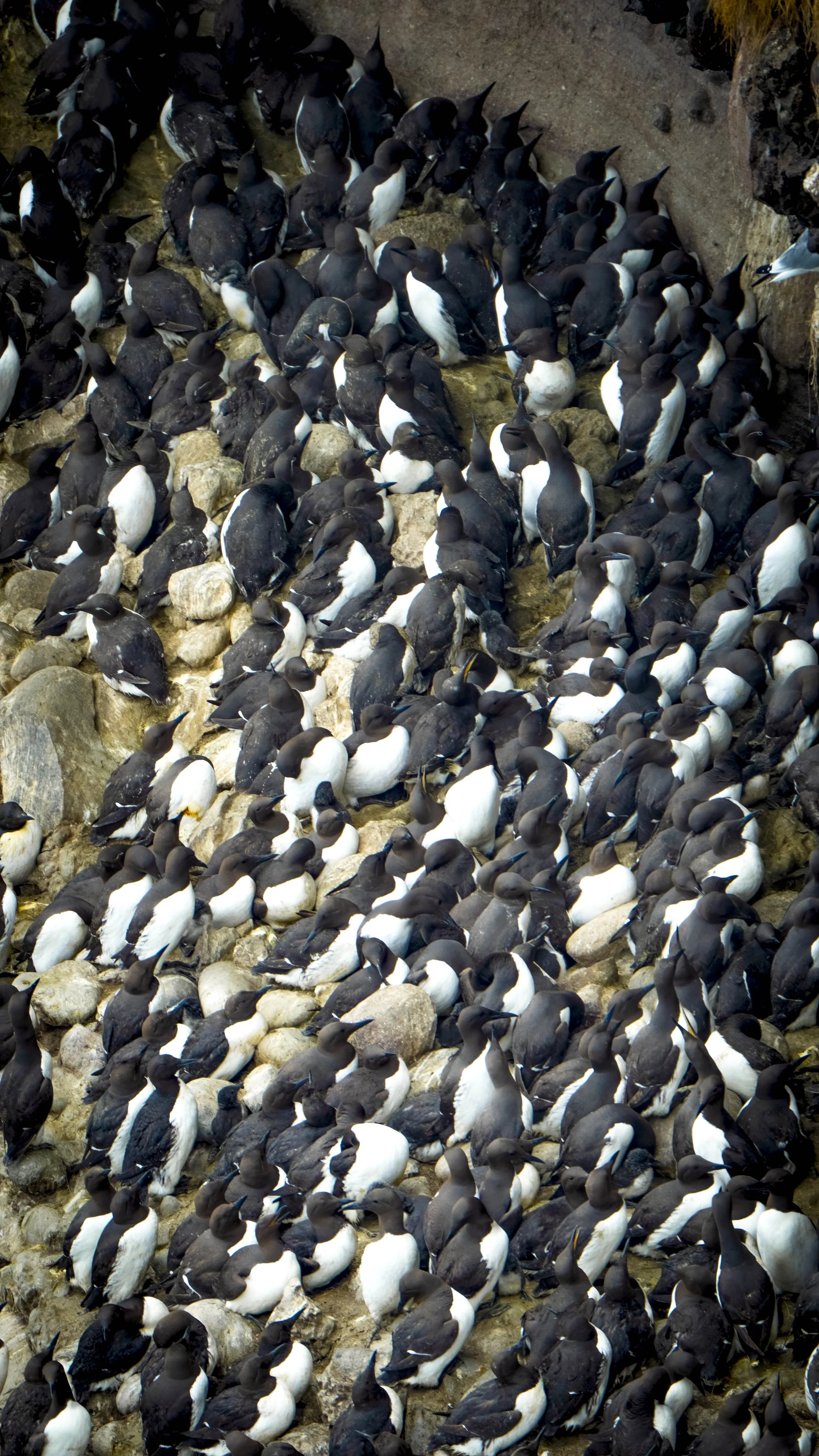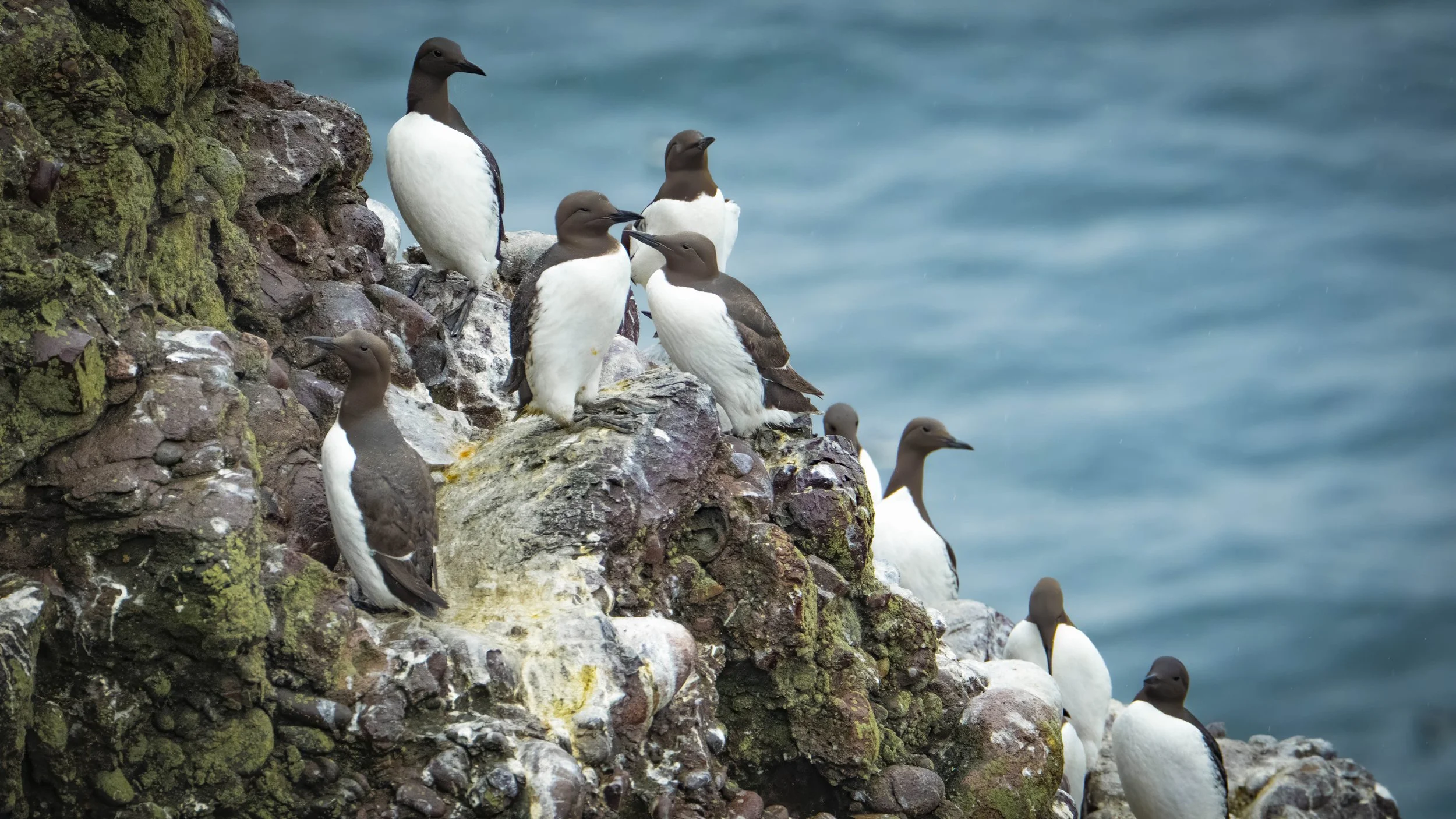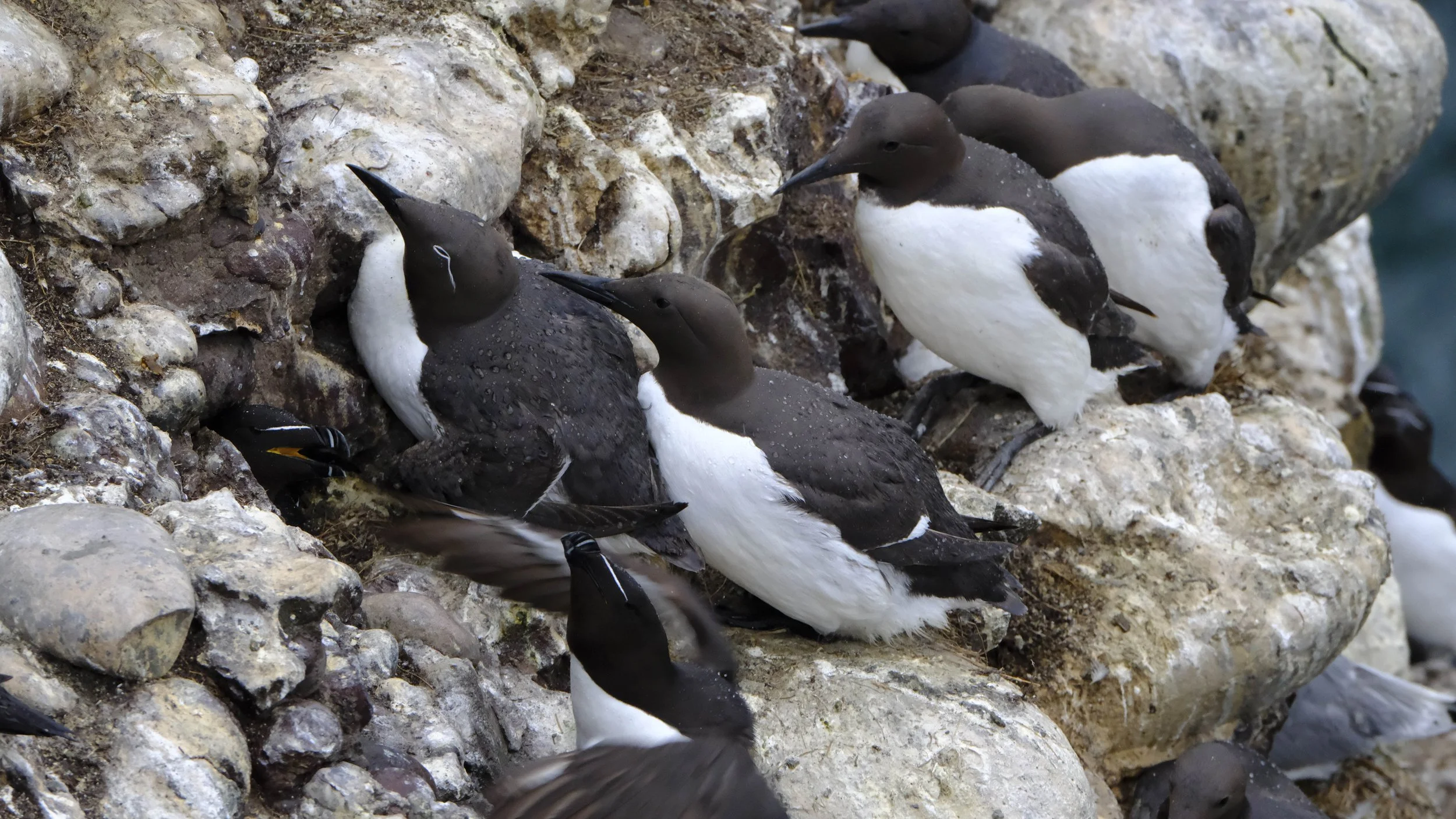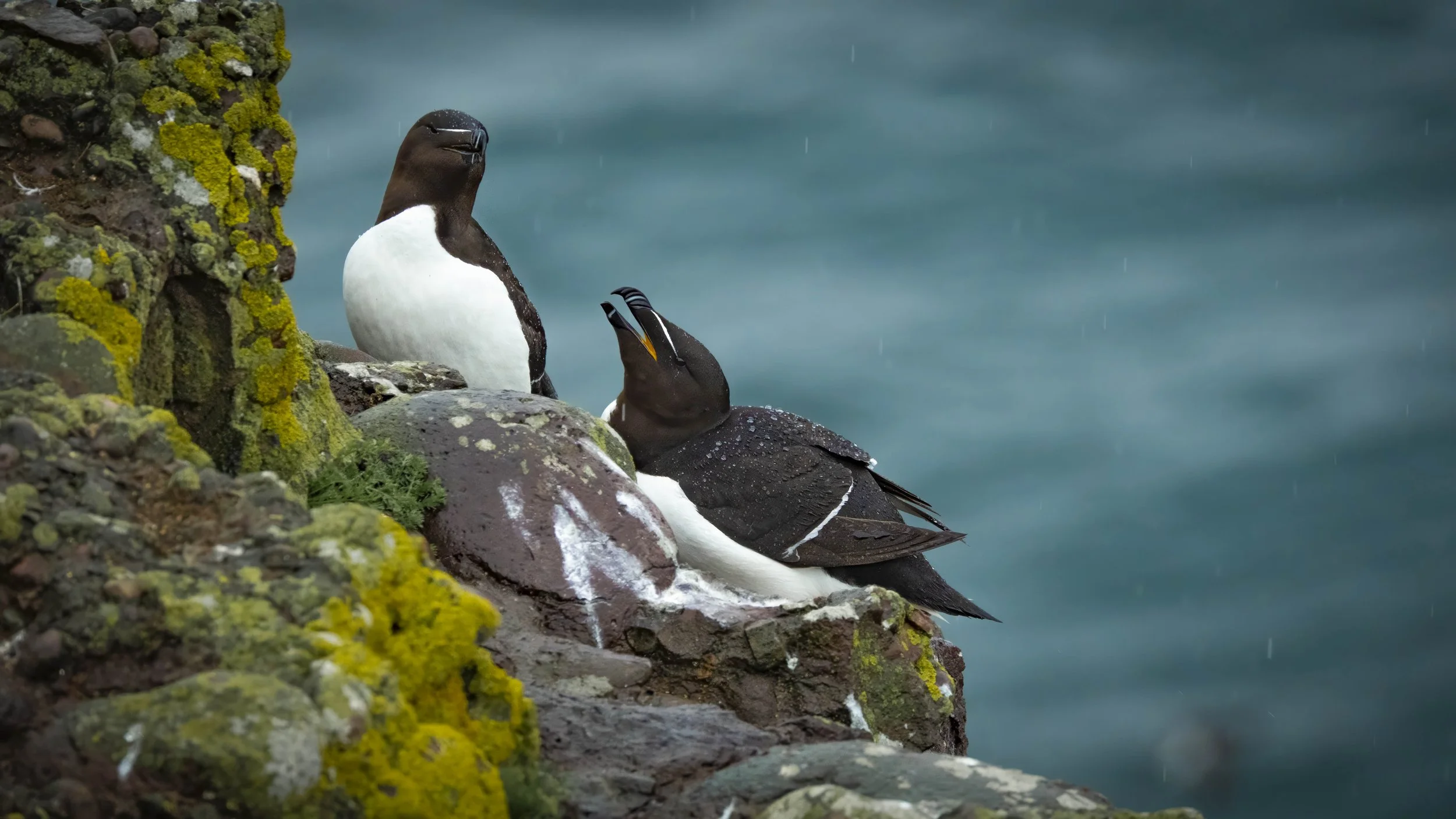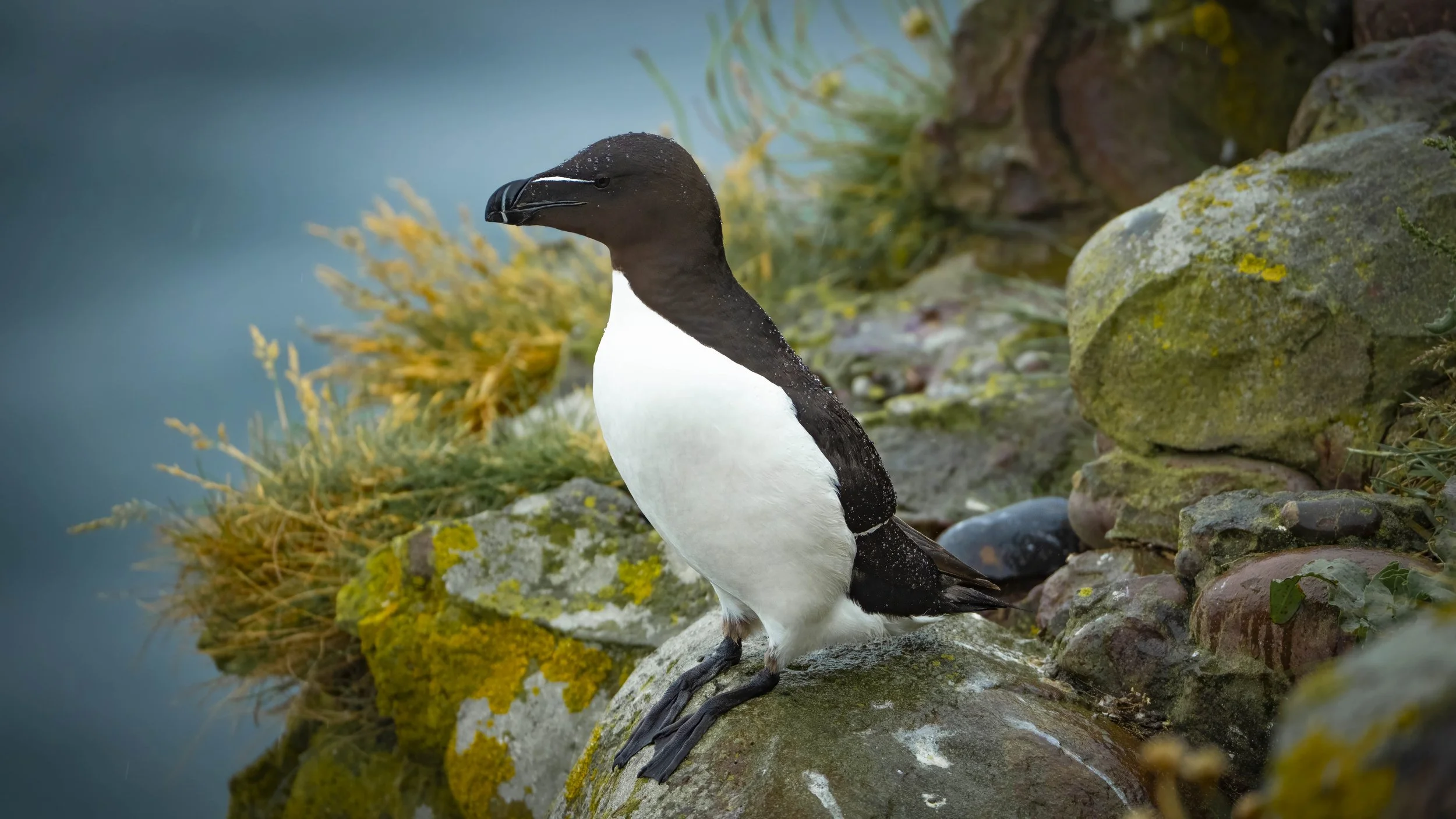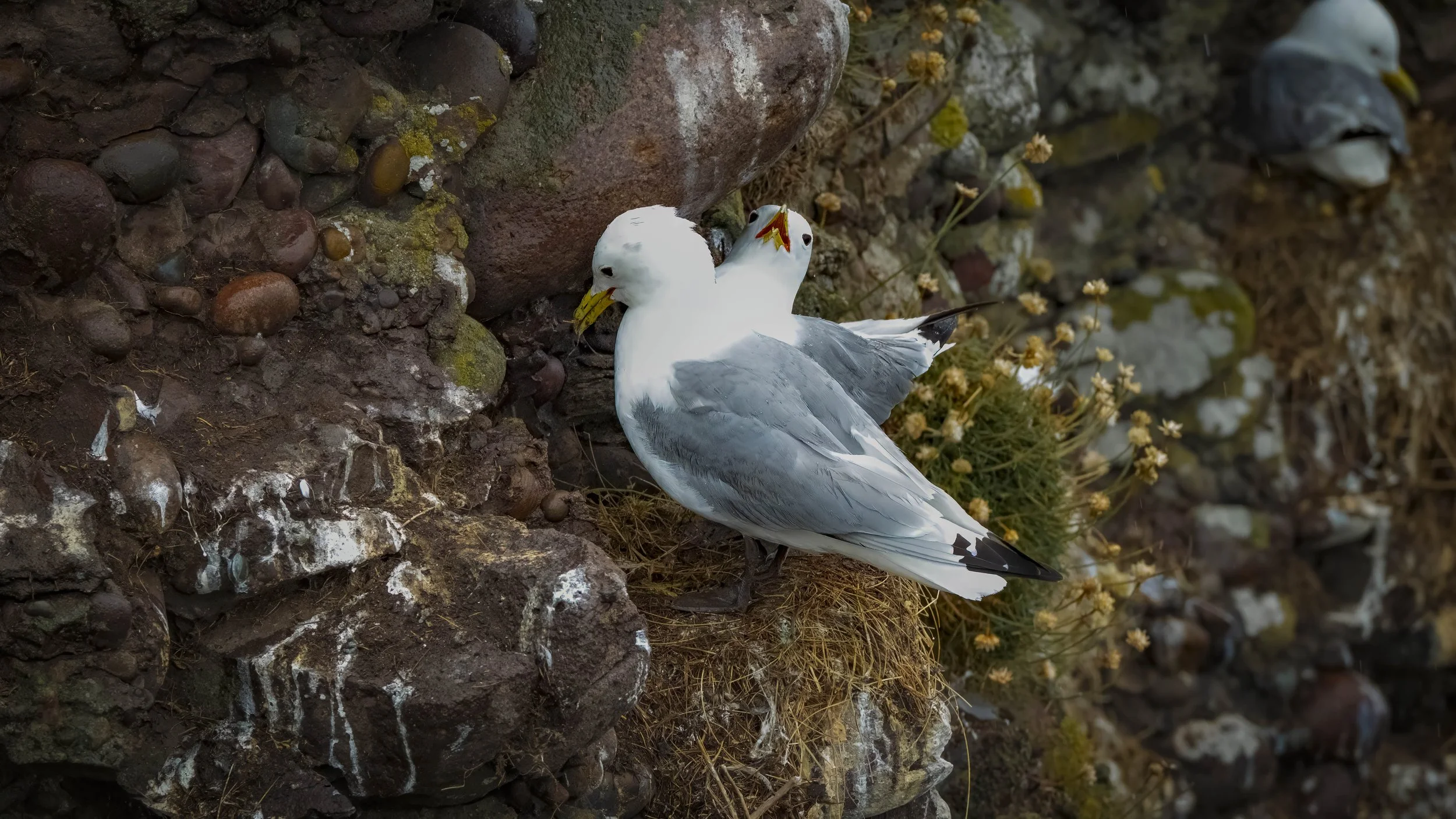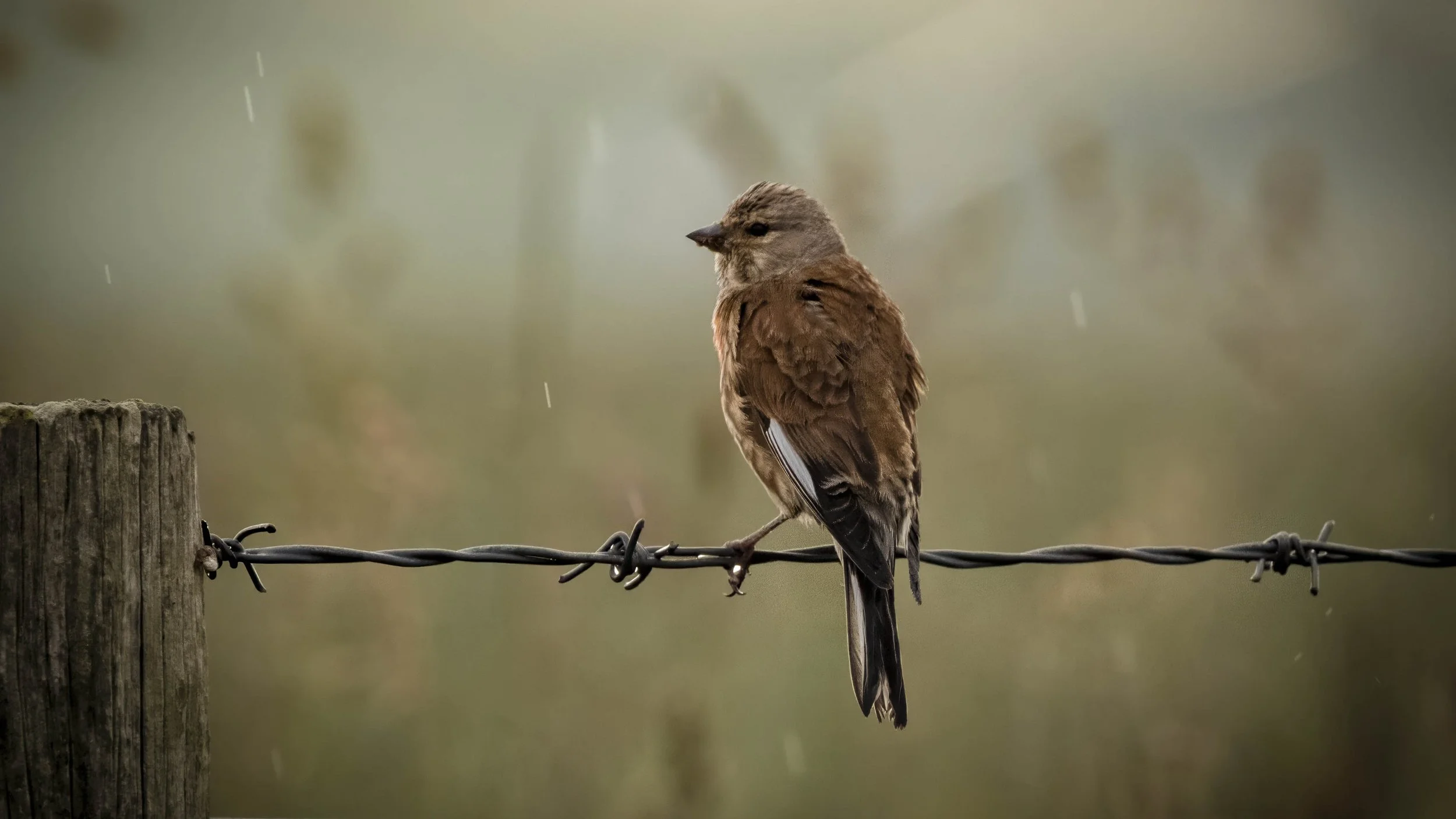RSPB Fowlsheugh, Aberdeenshire
RSPB Fowlsheugh, Aberdeenshire
Razorbill at RSPB Fowlsheugh
Date: June 20th, 2025
Conditions: Sea haar, mist and rain, clearing to sun
Location: RSPB Fowlsheugh coastal cliffs
A humid, hot day, the humidity causing a sea haar to roll in off the cool North Sea, turning to light rain and then breaking into evening sunshine.
The trail at Fowlsheugh tracks along the plunging cliffs at Fowlsheugh, plunging vertically below into the cobalt cold North Sea.
In excess of 170,000 birds inhabit Fowlsheugh at the peak of the breeding season between April and late July. This value places Fowlsheugh as the second largest seabird colony in Britain and the largest on Scotland’s east coast.
Today, they were in full chorus—guillemots packed shoulder to shoulder on the ledges, razorbills slicing through the mist, kittiwakes wheeling and crying in the updrafts. The sky felt alive.
Guillemot on the cliffs at RSPB Fowlsheugh
The cliffs themselves rise between 30 and 70 metres above the North Sea, carved from Old Red Sandstone—Devonian-age rock laid down over 400 million years ago in ancient river and lake systems. In places the rock is undercut by wave action, forming dramatic overhangs and sea caves.
Today, the afternoon mist lifted slowly, revealing a sky stitched with movement. Guillemots stood in tight ranks—black feet, thin necks, long pointed bills. Razorbills, heavier set with thick hooked beaks and white facial lines, nested nearby. Both species had fledged chicks, their calls echoing around the cliffs.
Guillemots crowd the cliff ledges at RSPB Fowlsheugh
Kittiwakes cried their name—“kittiwake, kittiwake”—as they defended nests from marauding gulls. Chicks huddled in crevices, vulnerable and wide-eyed.
A single bridled guillemot caught my eye—marked by a white ring around the eye and trailing line toward the neck. This rare polymorphism is more common in northern populations on the Scottish coast.
Walking past the hide, in amongst all the breeding birds, I saw what I had come for. My first mainland, Scottish puffin. Its vivid, yellow, blue and orange bill, clown like orange feet and a low “arrrr, arrrr” call.
I’ve spent many hours photographing puffins on Skomer, but this was my first up here in Scotland and my first on the mainland.
If you want to see the few puffins that are here, then you must venture to the bay just passed the hide, where they burrow in the soft sandstone halfway down the cliff face.
The stench of guano hangs thick in the air—acrid, elemental, oddly grounding. Inland, where coast meets crop, the land softens. Pied wagtail, meadow pipit, female linnet, skylark, yellowhammer, collared dove, rock dove, jackdaw and rook sighted.
Fowlsheugh is a favourite place. Great for photography and a great place to lose yourself for a few hours.
Species ID Highlights
Guillemot (Common)
Guillemots crowd the cliff ledges at RSPB Fowlsheugh
Bridled Guillemot with white ring around eye
Long, pointed black bill
Thin neck, black feet
Dense nesting colonies on cliff ledges
Bridled morph: white eye-ring with trailing line (rare, northern variant)
Razorbill
Nesting Razorbills at RSPB Fowlsheugh
Razorbill at RSPB Fowlsheugh
Thick, hooked black bill with white line
Chunkier build than guillemot
White underparts, black upperparts
Often seen rafting offshore or nesting beside guillemots
Kittiwake
Nesting Kittiwakes
Small gull with yellow bill, black legs
Black wing tips with no black on back
Distinctive call: “kittiwake, kittiwake”
Nesting on narrow cliff ledges, vulnerable chicks
Puffin
Stocky auk with vivid multicoloured bill (blue, yellow, orange)
Bright orange feet, clown-like appearance
Nesting in burrows, often solitary on mainland sites
Call: low, growling “arrrr, arrrr, arrrr”
Much smaller than expected.
Other Sightings (Inland Margin)
Female Linnet
Pied wagtail
Meadow pipit
Female linnet
Skylark
Yellowhammer
Collared dove
Rock dove
Jackdaw
Rook
Photo Tips.
Lens Choice: A 300–500mm lens is ideal for seabird portraits and flight shots.
Tripod Use: The cliffs face east and are prone to strong winds—tripods can be unstable. Handheld shooting is often safer and more flexible.
Footing: Paths are rough and uneven, with exposed cliff edges. Good boots and caution essential.
Light: Morning light can be dramatic with haar and mist—soft, diffuse, and atmospheric.
Ethics: All nesting seabirds are protected under Scottish law. Do not disturb nest sites or approach ledges. Use long lenses and observe from a respectful distance.

